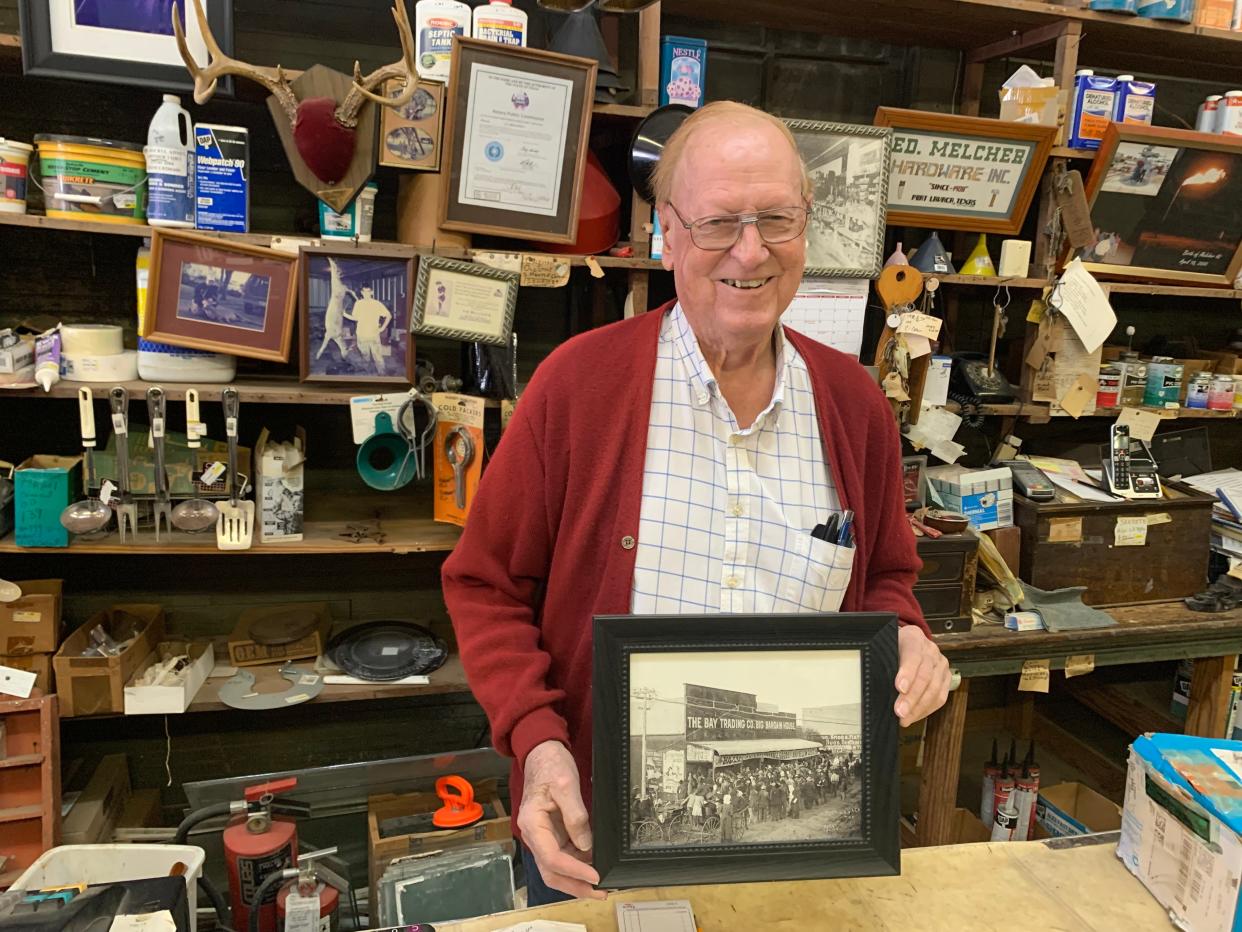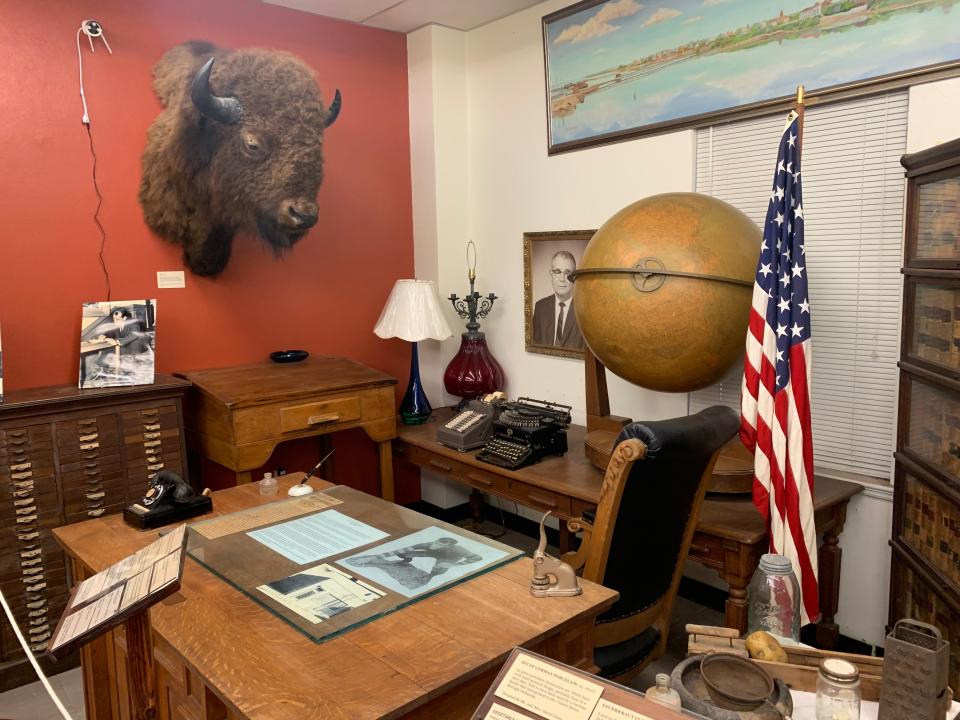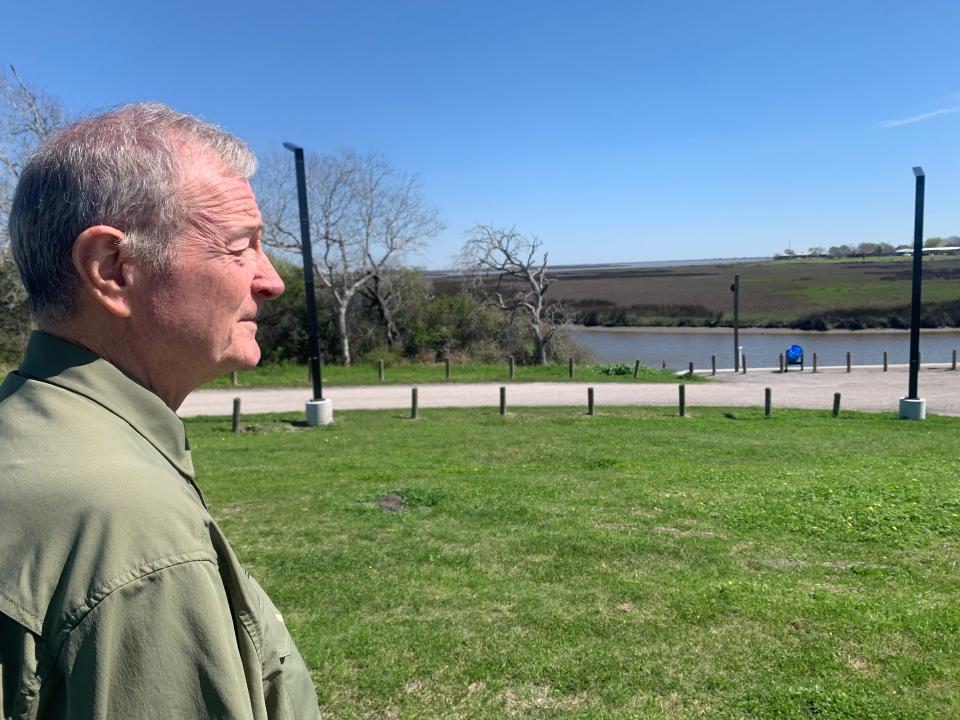Heading to the Texas coast? Here are 5 things you should do in historic Port Lavaca.

PORT LAVACA — Get this straight from the start: "Port L" is not "Port A."
Port Lavaca is a residential, commercial, industrial and agricultural town of approximately 12,000 on Lavaca Bay, an inner arm of Matagorda Bay.
For its part, Port Aransas is an increasingly upscale beach community, as well as a favored spot for vacationing Texans, on Mustang Island, right on the Gulf of Mexico.
More: Texas History: Among Galveston's historical gems, don't skip the Rosenberg Library
Recently, I daydreamed: Why not explore one of those ports during our annual winter break on the Texas coast?
Port A is a three-hour drive from where we hunker down for a "reading fortnight" each winter on Surfside Beach, located on Follett's Island, one isle down from Galveston. Given that, the Port Aransas option would not be an easy day trip.
Port L, however, is just two hours away if one zips down the recently improved State Highway 35 through Angleton and Bay City. Nearby on Matagorda Bay is Indianola, a town with buckets of Texas history.
That option hit the sweet spot.
As luck would have it, I secured a first-class guide for the day in Gary Ralston, a Port Lavaca native who retired from facilities management at the Electric Generation Station near Bay City. He serves on the Calhoun County Historical Commission.
Minutes after we met up at the local VFW hall, Ralston showed me a small, once-lost cemetery that he and historical commission members have explored with ground-penetrating radar.
I was hooked.
But first, the promise of Indianola
We spent the bulk of our time not in Port Lavaca, but along the western shore of Matagorda Bay in Magnolia Beach, Indian Point (Old Indianola) and the storied town of Indianola, once the second-largest port on the Texas coast after Galveston. The town was wiped out by hurricanes in 1875 and again in 1886.
Now a tiny, relaxed bayside community with cabins on stilts, Indianola and its environs abound with historical incidents, including the exploits of ill-fated — and ill-tempered — French explorer René-Robert Cavelier, Sieur de La Salle during the 17th century; skirmishes between the Karankawa and the Spanish during the 18th century; Civil War clashes during the 19th century; and a large World War II artillery training base during the 20th century.
More: Here are 10 reasons why Corpus Christi is the most promising city in Texas
All this on one vulnerable sliver of sand.
I'll return to these Indianola-related subjects in a future column. Meanwhile, with generous help from Ralston, let's look at five things you must do in historic Port Lavaca, located at the wide mouth of Lavaca Bay.

1. Start at the Port Lavaca harbor
There is no better way to grasp the significance of Port Lavaca — originally called La Vaca, Spanish for "the cow" — than to wander onto one of the harbor's piers, bulkheads or marinas.
Looking south from one of these vantage points, you see the town rising on a short bluff 15 to 20 feet above the bay. Although Port Lavaca, like every other spot on the Texas coast, has been battered by hurricanes — the worst in modern history was Hurricane Carla in 1961 — its elevation has been its salvation.
To the north across the bay, one spies Point Comfort, home to a hulking, abandoned Alcoa Aluminum plant and a newer Formosa Plastics plant. These and other industries are connected to the Gulf via a dredged deep-sea channel.
In the mid-distance, one sees a low fishing pier, one of three on Lavaca Bay; and sand bars exposed above the shallow bay, some of them white with pelican colonies.
Near the pier, Lighthouse Park offers a beach and a nature trail over the marsh via boardwalk. Half Moon Reef Lighthouse is located next to the Bauer Center, near the park entrance. Erected in 1858, it originally stood in Matagorda Bay on Half Moon Reef.
To the east, you look out over Matagorda Bay. To the west is Lavaca Bay, and beyond that, out of sight, is Garcitas Creek, where the remains of La Salle's colony were found.
Ralston and I parked on a large bulkhead that included a silhouette sculpture of the Texans who attempted to defend Port Lavaca from bombardment by federal gunships on Oct. 31 and Nov. 1, 1862. With this attack in mind, one resident, Capt. Edgar Collins Singer, invented an underwater mine in February 1863. He later manufactured them in Alabama for the Confederate Navy. Singer was also and investor in the H.L. Hunley, a submarine that sunk the USS Houstonic at Charleston Harbor in 1864.
More: Texas road trip: Tell us what to see, do and eat in Corpus Christi, and anywhere nearby
We visited an abundance of Texas Historical Markers that day. Calhoun County hosts 84 of them, a mighty high figure for a county with only 20,000 residents. One reason might be Ralston, who heads the markers committee for the Calhoun County Historical Commission, which partners with the Texas Historical Commission on research, finance and placement.
2. Time travel at Melcher's Hardware Store
After the waterfront, we tooled around the historic business district of this county seat. The streets felt full of activity, although the landmark 1904 Lavaca Hotel, recently renovated, appeared to be empty. (The 1903 Luther Hotel, located not far away in Palacios, was threatened with demolition but has been saved by volunteers headed up by Margaret Doughty and Edith Gower.)
Ralston took me to Melcher's Hardware Store, which traces its origins back to the 19th century and its predecessor, the Branch Company. The owner — and quite a storyteller! — is J.C. Melcher, whose grandfather took over the business in the early 20th century.
To step inside Melcher's is to enter the past, since it looks, at first, as if nothing has changed for more than 100 years. Thousands of items, including some collectibles, are arranged above wide pine flooring planks. At the same time, it operates as a functioning hardware store. While we were there, J.C. Melcher took time from his stories to help customers who needed some essential supplies.
More: Visiting shrines, missions, presidios, vaults and other hallowed places in South Texas
Melcher, who descends from Prussian and Czech ancestors, is related to immigrants who settled in Central Texas. Early on, the store was set up on a system used by dry-goods stores that allowed farmers to purchase supplies on credit until they sold their harvests. (If you enter Port Lavaca from the east, you drive through miles of flat farmland used for cotton, corn and other crops, at the time ashy gray and ready for spring planting.)
Melcher's office is its own wonderland of old supplies, maps and curiosities. Stop by and stay a while. He might show you how he operated the old elevator at the back of the store.
3. Reflect on history at the Calhoun County Museum
The Calhoun County Museum is among the best of its kind in Texas. It includes artifacts rescued from La Belle, a sunken ship from the La Salle expedition. The remains of the ship and many more artifacts can be seen at the Bob Bullock Texas State History Museum in Austin.
Thanks to the county's financial support, this museum keeps regular hours five days a week, a rarity among small Texas institutions. Director Vicky Cox welcomed us into a large segmented room that included dioramas of Indianola and La Salle's colony.
The county seat, it turns out, was founded after the 1840 Comanche raid on nearby Linnville and Victoria, the largest city in the immediate area. That raid, deep into settled Texas, was followed by the Battle of Plum Creek, a running conflict fought near Lockhart. Residents of Linnville, which was burned to the ground, moved a few miles away to Port Lavaca, which was laid out in 1842.
More: Our Think, Texas road trip to Corpus Christi just got bigger. Too big for one visit.
Among the most charismatic artifacts at the museum is the last third-order fresnel lens from the Matagorda Island Lighthouse. The original was placed on a 79-foot-tall cast iron tower in 1852 on the west side of Pass Cavallo.

4. Wander through cemeteries and battle sites
During my time in Calhoun County, we visited three historic cemeteries and two battle sites.
One of the first stops was the grounds of the Battle of Norris Bridge. In November 1863, about 40 Texas Rangers tried to burn the bridge over Chocolate Bayou. About 3,000 Union infantrymen approached, put out the conflagration, and then fired on the Rangers. Their captain ordered a retreat, and the Rangers scattered in all directions.
Mistaking a herd of cattle on a distant hill for Rangers, the Union soldiers aimed their guns on this herd and shot all the bovines. The one fatality among the troops was a Union officer who was downed by a musket shot through the thigh, according to a Texas Historical Marker at the site.
This was one of few direct engagements of armies on the Texas front during the Civil War. A new playground and a picnic area now grace the battleground.
"One place of interest to visit in Port Lavaca that you didn’t already see is the historic Ranger Cemetery," Ralston says. "The earliest grave is H. Oram Watts, customs collector at Linnville. He was killed in the Great Comanche Raid of 1840. It’s located on the City Harbor."
5. Eat to your heart's delight
While I was growing up in Houston, my parents would load their six kids into the station wagon, not equipped with air conditioning, to visit my paternal grandparents in Corpus Christi. We begged to take the long way, that is, the coastal highway.
We might stop in Rockport for the attractions around the harbor, such as the Texas Maritime Museum, or at the Aransas Wildlife Refuge to seek out endangered whooping cranes, or perhaps linger for a meal in Port Lavaca, which we associated with comfort seafood.
More: Texas drought exposes resting place of five sunken World War I ships in Neches River
During adult road trips, I’ve stopped at Bayside Seafood (2055 Texas 35) and the Lighthouse Cafe (2090 Texas 35) in Port Lavaca. The food and especially the atmosphere comported with my childhood memories. Both are still open for business.
These days, Ralston endorses Texas Traditions Grill & Bar ("I’d say the best there is in Port Lavaca"), the Green Iguana Grill, Magic Asian Cuisine ("Small but good"), Los Rios Mexican Mexican Grill & Seafood, Leones Mexican Grill y Panaderia, and Cathy's Food Trailer in Calhoun Plaza ("Not always there, but excellent. She owned a popular restaurant in Port O’Connor for many years and now just operates out of the trailer.")
Michael Barnes writes about the people, places, culture and history of Austin and Texas. He can be reached at mbarnes@gannett.com. Sign up for the free weekly digital newsletter, Think, Texas, at statesman.com/newsletters, or at the newsletter page of your local USA Today Network paper.
This article originally appeared on Austin American-Statesman: Should you stop in Port Lavaca, Texas? Yes. Here are 5 reasons why.

